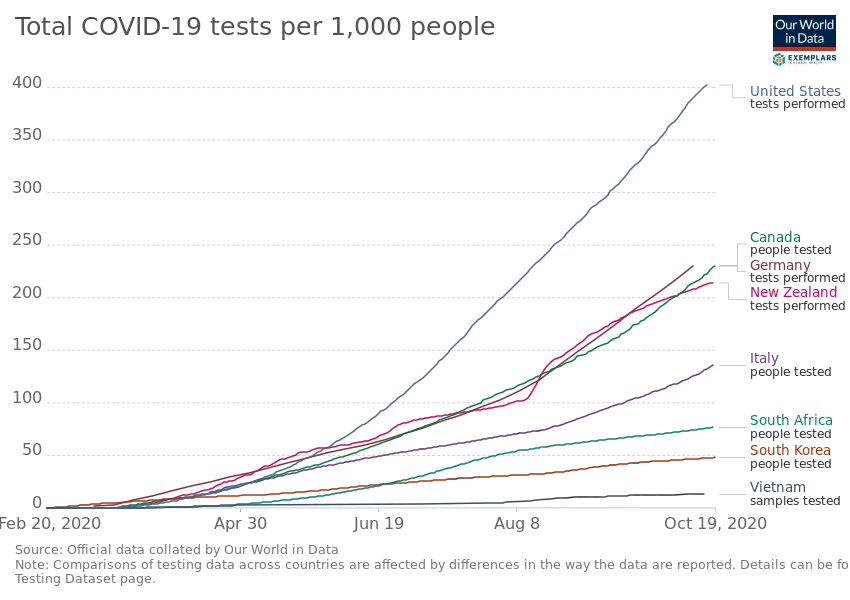A while back I was talking with my dad. He heard something wacky about Covid-19 testing accuracy: they were so inaccurate that “you might as well flip a coin.”
That didn’t sound right, but at the time I didn’t have a strong enough intuition of testing accuracy to explain it…
To clarify, let’s learn about Covid-19 tests, how they’re measured and what that means for detecting infections in a population.
Try it for yourself here: Covid-19 Testing Simulator
1,000 people
To understand the impact of testing accuracy, we’re going to run some experiments on a small population. Above is 1,000 people.
1,000 people, 2% of whom have Covid-19 (orange).
For the sake of easy numbers, let’s say 2% of our population has Covid-19. This is the disease’s “prevalence.” You can see about 2% of the group above is infected (orange).
(Note: 2% is on the high side. For comparison, North Dakota is the “hotspot du jour” and while we don’t know the state’s actual current prevalence, in the last 10 days there were 5,793 new cases for North Dakota’s 762,062 citizens, or 0.7% of the population).
To understand the accuracy differences between the most common Covid-19 tests, we’re going to simulate how these tests might perform if we tested all 1,000 people in our population. We’ll look at 5 different tests:
- RT-PCR: the “gold standard”
- Rapid Antigen: fast, but spotty
- Rapid Molecular: fast but reliable (maybe)
- Antibody: for detecting Covid after several weeks
- Coin Flip: what if we just flipped a coin?
#data-visualization #explorable-explanations #editors-pick #data-science #covid19
